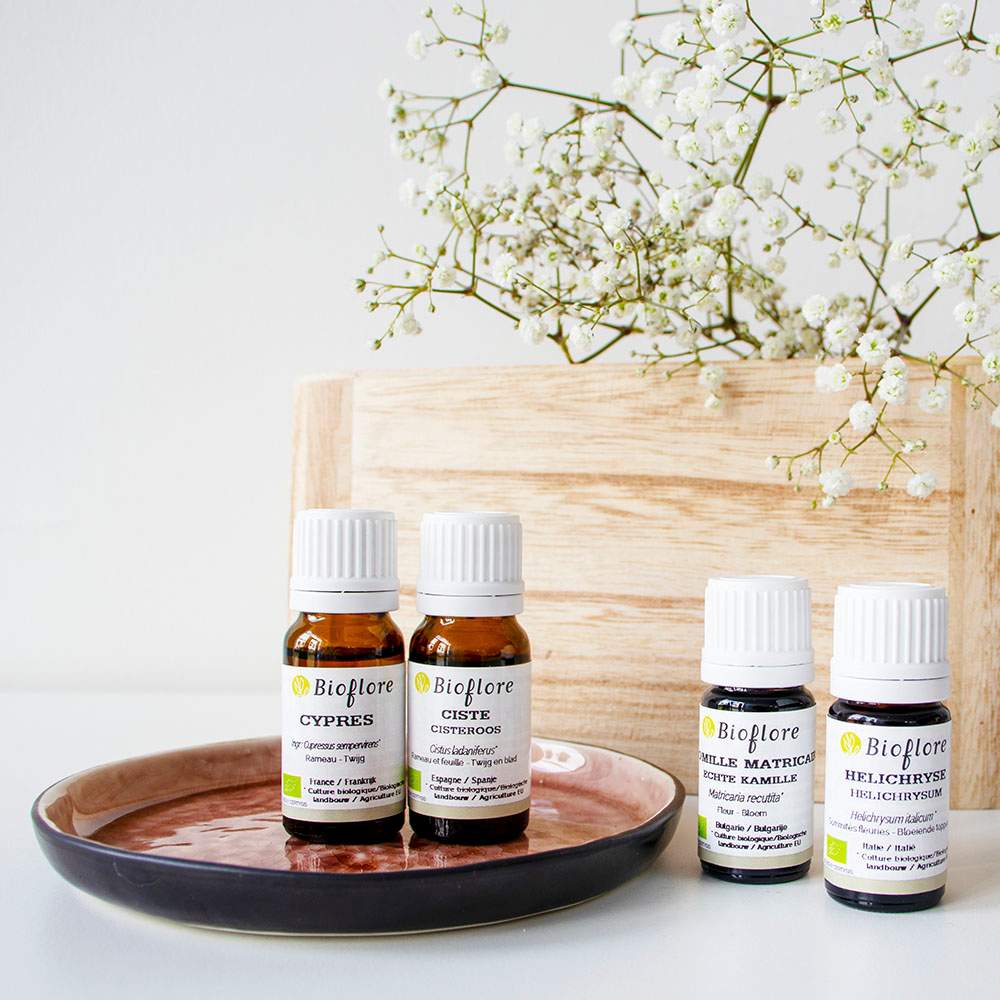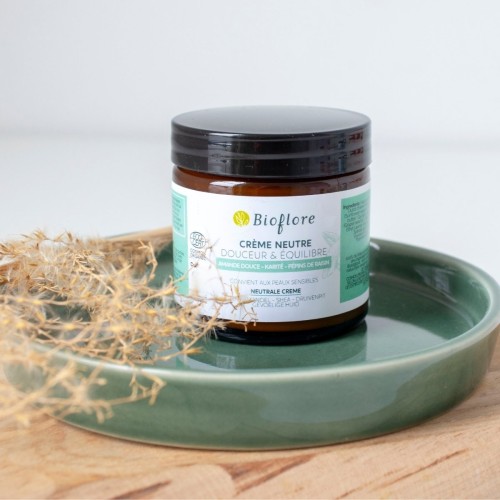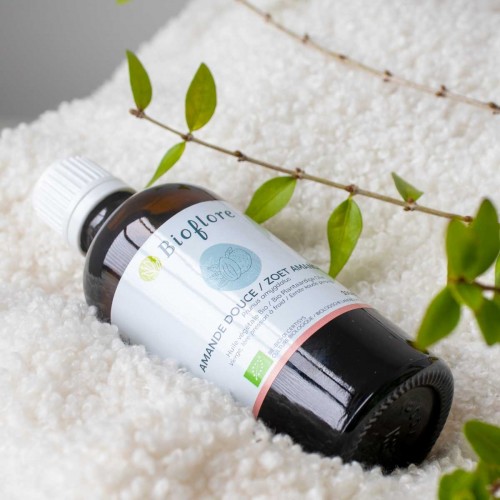Tight skin, redness, couperose, rosacea, what are the natural solutions to regain an even complexion and comfortable skin?
Discover anti-redness essential oils, care tips for a soothing routine and easy recipes to calm reactive skin.
Why does the skin turn red?
Does your skin have a tendency to redden, react to temperature variations, do you sometimes feel hot? It may be couperose or rosacea, also called acne rosacea, even though it has nothing to do with teenage acne.
This redness is a sign of fragility in the small blood capillaries that irrigate the epidermis. Certain factors can aggravate redness, such as wind, cold, very hot baths or showers, the consumption of certain products (alcohol, coffee, spices) or cosmetics containing alcohol.
Essential oils are very interesting for calming redness, supporting the circulatory system in the face and promoting an even skin tone.
Our soothing anti-redness routine
The morning
Clean your skin with an organic cotton pad or a washable wipe soaked in Roman chamomile, chamomile matricaria, rockrose or immortelle hydrosol. Then apply our Gentle Cream and/or a vegetable oil of sweet almond or hemp with a drop of Italian immortelle essential oil.
In the evening
Remove your make-up with a very mild vegetable oil such as sweet almond or jojoba, rinse with clear water and then cleanse your face with our universal cleanser or our mildest soap.
Then apply our anti-redness night serum.
The right gestures
limit the products on your skin, if you use make-up, choose organic products adapted to sensitive skin. In the evening, if you have not used any make-up, limit your skin to a very gentle cleansing or just a cleansing with a hydrosol.
Anti-redness essential oils
- Italian immortelle essential oil: if you had to choose only one to fight against redness and couperose, this would be it. It strengthens the small blood capillaries and soothes redness, couperose and rosacea for an even complexion.
- Cistus essential oil has a powerful haemostatic and healing action, effective in soothing "flushes", redness and burning sensations. Its regenerating and astringent action helps to firm tired skin and tighten pores.
- Chamomile essential oil, also known as German chamomile, has a calming and soothing effect thanks to the anti-inflammatory action of the chamazulenes and alpha-bisabolol oxides it contains.
- The essential oil of evergreen cypress provides its decongestant action on the venous system, it promotes microcirculation and thus prevents the dilation of small blood capillaries to reduce redness, couperose and rosacea.

Focus on calophylla vegetable oil
Very active, it is the anti-redness vegetable oil par excellence. Rich in inophylline A, calaustrin and inophyllolide which promote healing and repair minor irritations. It also contains lauric acid with an anti-inflammatory action and polyphenols which stimulate microcirculation. It should always be used diluted in a milder vegetable oil, especially as its scent is very powerful!
Calming and soothing hydrosols

Chamomile matricaria hydrosol to soothe redness, irritation and sensitivity.
Helichrysum/immortelle hydrosol soothing, anti-redness, regenerating and healing.
Cistus hydrosol, ideal for mature skin with a tendency to redness. Astringent, it also promotes a clear complexion and tightened pores.
Our soothing recipes
Soothing night serum for rosacea and couperose
In a 50 ml bottle, pour:
- Calophyllum vegetable oil - 15 ml
- Oily macerate of calendula - 35 ml
- Italian immortelle essential oil - 5 drops
- Cypress evergreen essential oil - 2 drops
- Chamomile matricaria essential oil - 2 drops
- Cistus essential oil - 1 drop


Anti-couperose spot roll-on
In a 10 ml roll-on bottle:
- Calendula oily macerate - 10 ml
- Cypress essential oil - 1 drop
- Immortelle essential oil - 2 drops
- Lemon essential oil without furocoumarins - 1 drop
Soothing marshmallow mask
- White clay powder - 2 tablespoons
- Marshmallow powder - 1 tablespoon
- Chamomile matricaria hydrosol - 4 tablespoons
- Oily macerate of calendula - 1 teaspoon


























